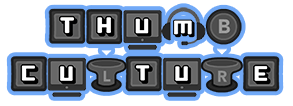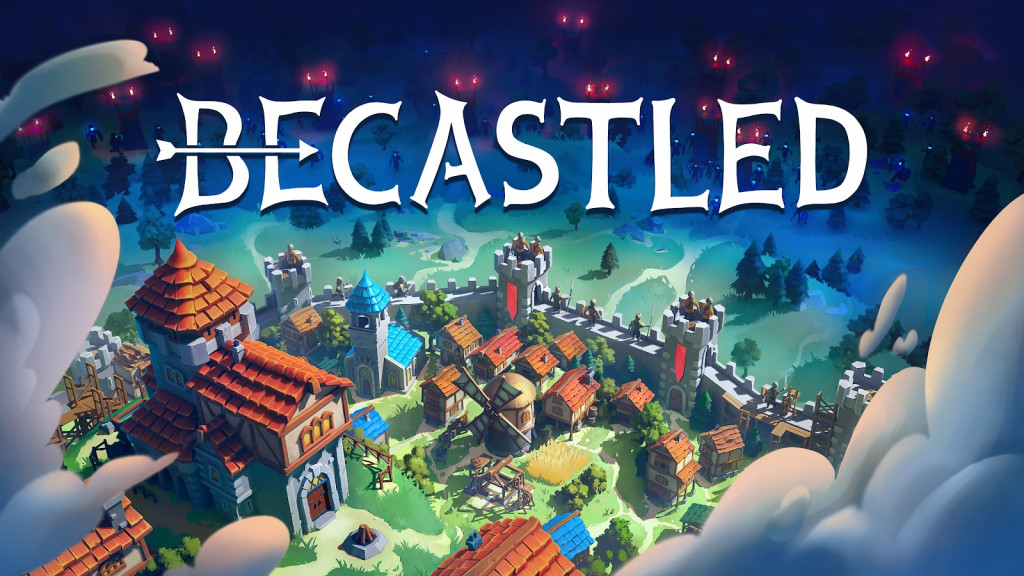
Every so often, a new real-time strategy game pops up to remind us that the genre still has a pulse, and a damn good one at that. With Becastled (out now on Steam, GOG, Xbox, Switch, and Playstation), developer Mana Potion Studios and publisher Pingle Studio Ltd bring us something refreshingly earnest: a medieval city-builder that fuses cosy creativity with nightly chaos. It’s rare to see a new RTS try something different these days. Between massive 4X empires and military micromanagement simulators, few dare to find that sweet spot between Age of Empires’ depth and Kingdom Two Crowns’ immediacy. But Becastled gives it a proper go, and it’s good to see someone still flying the RTS flag in 2025.
Becastled – Be Crowned
It’s heartening to see a small team take risks in a genre often dominated by formulaic juggernauts. Becastled reminds us that strategy games don’t have to be all spreadsheets, endless menus, and micromanagement; they can be playful, charming, and still strategically demanding. If you’ve ever wished Age of Empires had a more deliberate pace, or Kingdom Two Crowns had more substance, this is your kind of game. It’s the kind of RTS that makes you feel clever, entertained, and occasionally guilty for laughing at a panicked villager. Comment down below about your favourite RTS and what you’d like to see for the genre.
Gameplay
Becastled wastes no time drawing you in with a beautifully hand-drawn opening cutscene that sets the stage with surprising charm. It’s simple, but effective – the sort of thing that makes you want to roll up your sleeves and start stacking stone. The game eases you in gently, starting with a hands-on tutorial that feels like part of the kingdom rather than a dry lesson. You don’t just click a few buildings, you’re guided through establishing your first plots, assigning villagers, and balancing resources, all while the little kingdom buzzes with life around you.
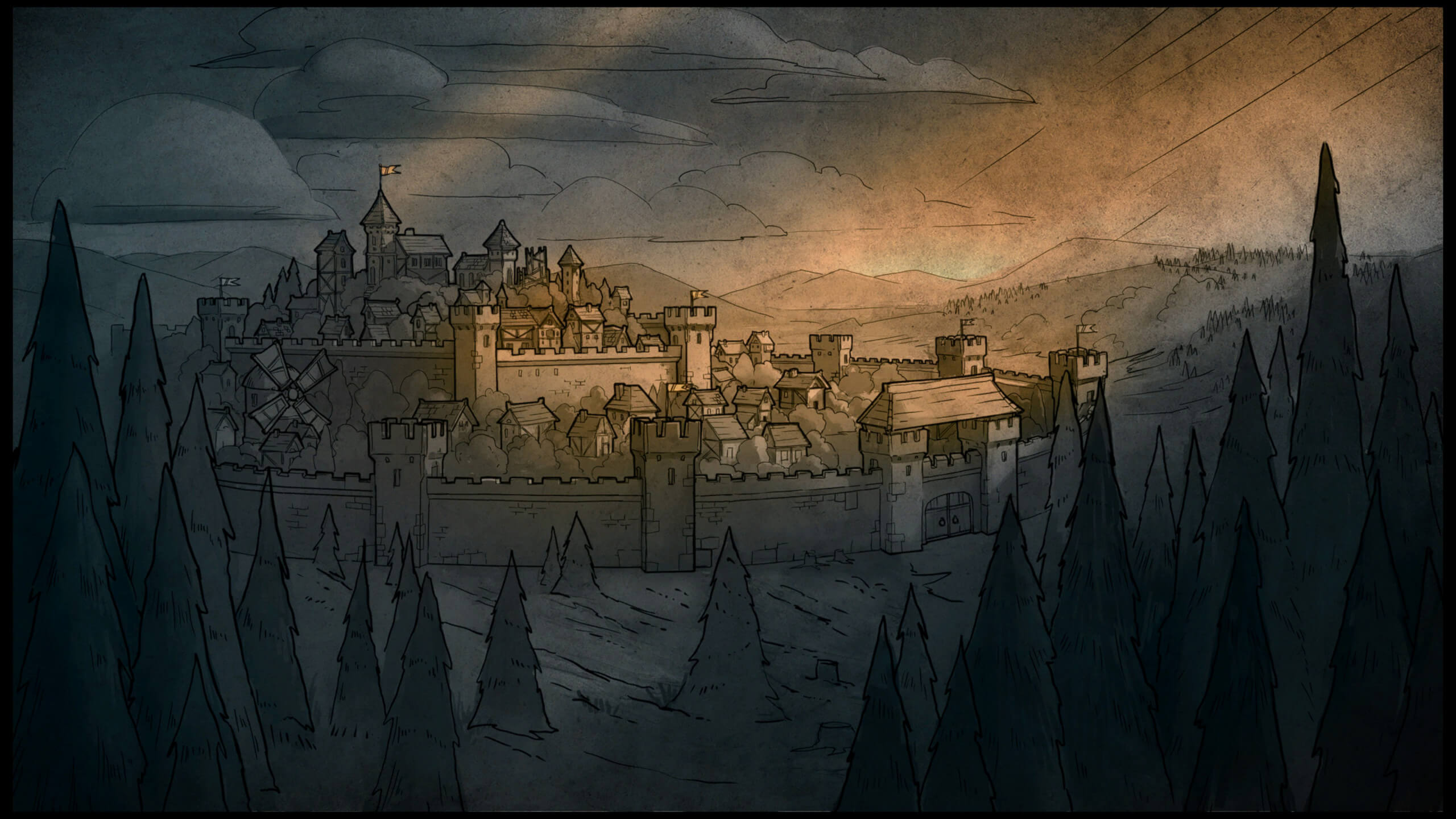
Tutorial tasks are paced thoughtfully: early missions focus on the essentials; gathering wood, placing homes, and erecting a basic wall. It’s straightforward, but the pacing and small touches keep it engaging. Villagers go about their daily routines, carrying logs, mining stone, or tending to their fields, giving you a sense that the kingdom is alive from the very start. By the time you finish the tutorial, you’re not just familiar with mechanics, you’ve already noticed the little quirks of your villagers and buildings, and the gentle rhythm of day-to-day life sets the tone perfectly. Becastled is a game that rewards care, curiosity, and strategic thinking without ever feeling overwhelming.
You begin as the lord of the Sun Kingdom, expanding your settlement plot by plot. Think Civilisation’s tile claiming meets Age of Empires’ hands-on construction. Each plot you buy comes with its own resources, forests, fields, and quarries, and each must be managed carefully if you want your kingdom to thrive. Your daily rhythm revolves around balancing growth and preparation. By day, you gather resources, build homes and defences, and keep morale high with taverns and trinkets. By night, you face the Moon Beasts; spectral enemies that grow stronger with each passing evening. Their attacks are relentless, especially during Blood Moons, which turn the night sky crimson and test even the best-prepared fortresses.
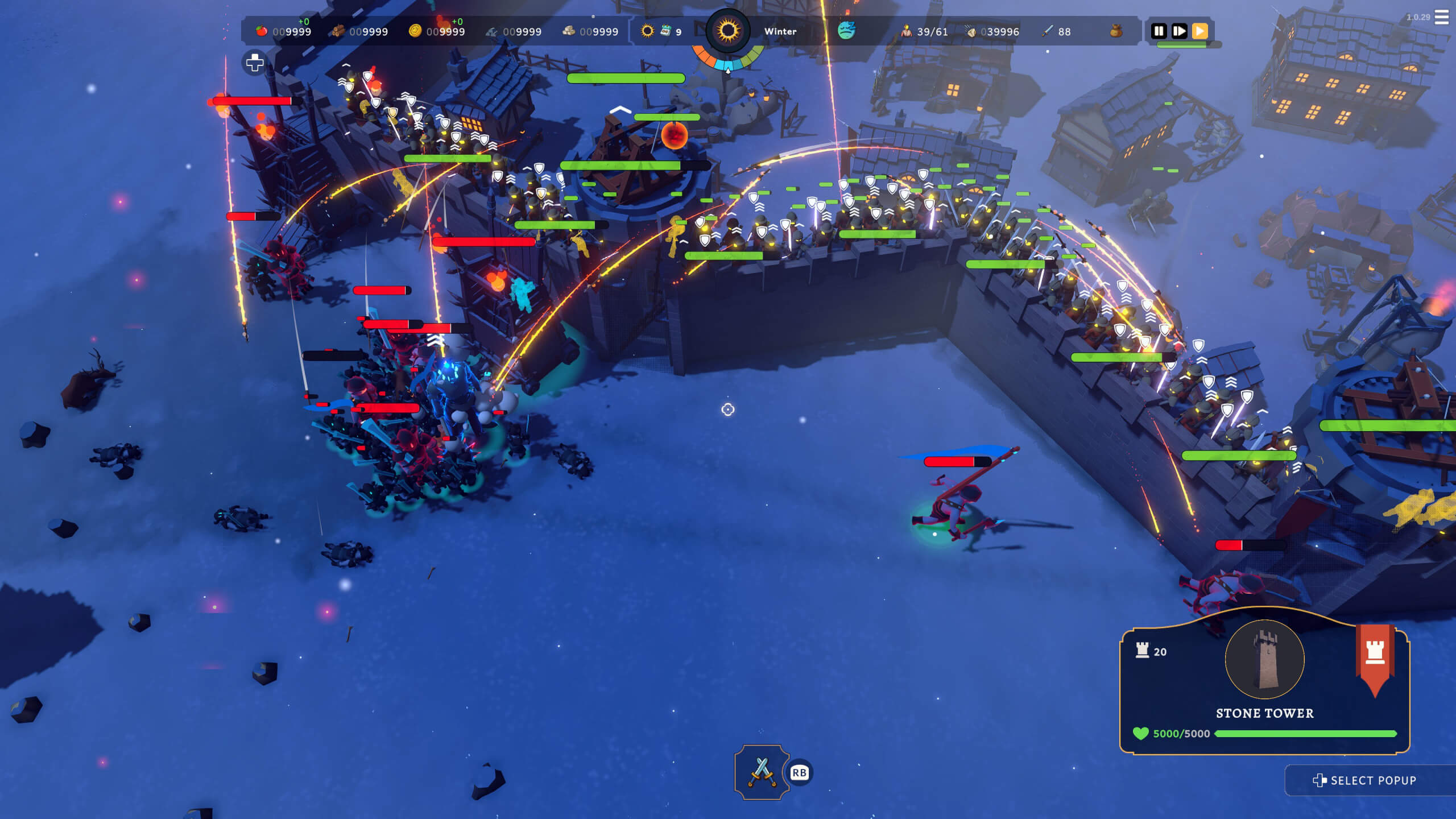
Weather adds another clever wrinkle: winter halts crop growth, forcing you to buy or stockpile food in advance. It’s not just an aesthetic change; it’s a survival strategy. Then there’s the wall system. You can only build within your owned grid, meaning walls must follow logical borders. It’s perfect for players who struggle with defence layouts; you can’t just spam fortifications anywhere. Be warned, though, place a building across a grid line and you might find your perfect wall plan suddenly blocked, forcing a bit of demolition. There’s also a surprisingly deep tech tree, letting you unlock new structures, trades, and units. When you progress, trebuchets, ballistae, and other siege tools enter the fray and thankfully, no friendly fire! You won’t lose a dozen villagers to a poorly aimed boulder, which is more than can be said for most RTS games.
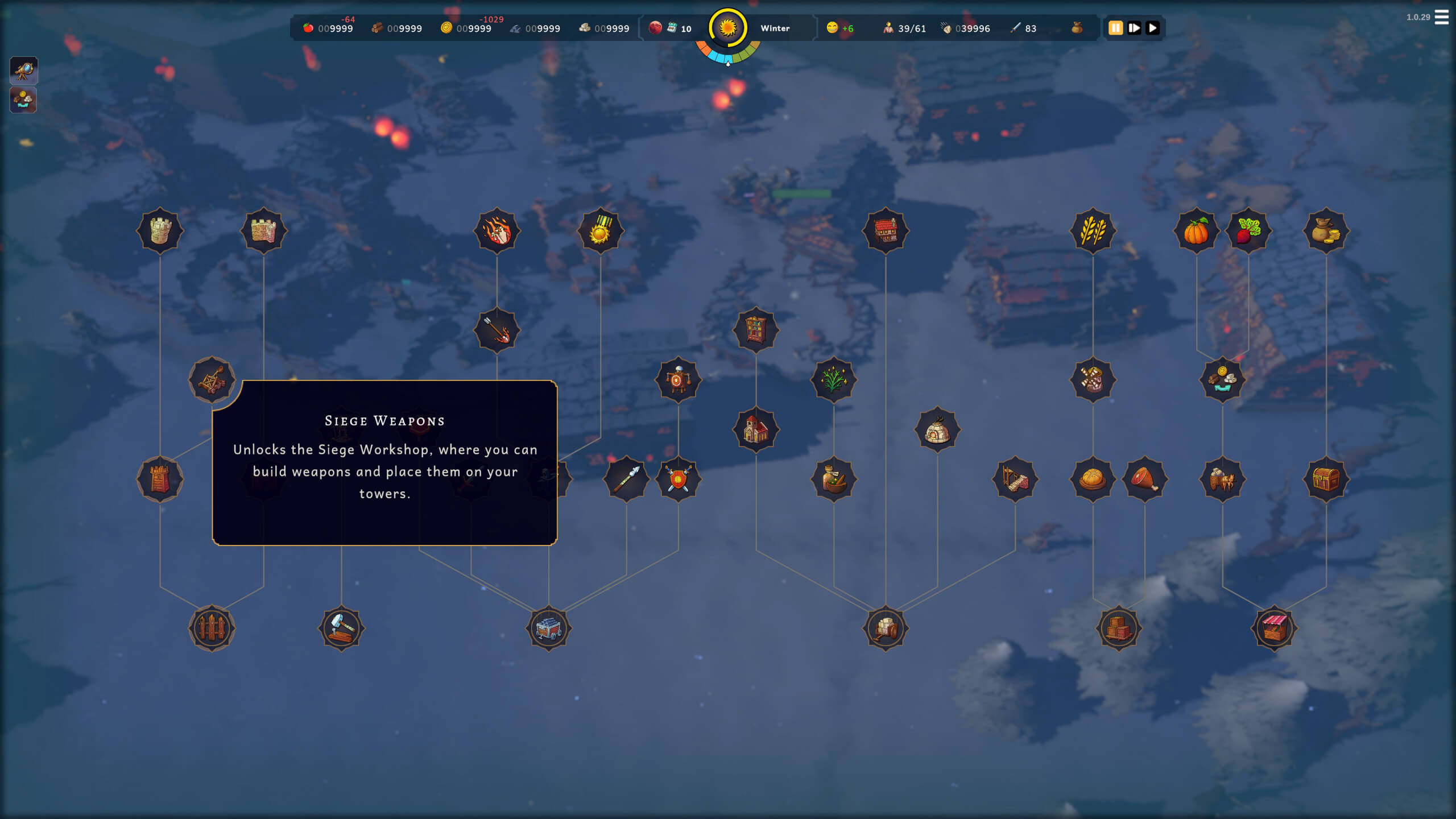
Beyond strict strategy, Becastled rewards experimentation. Whether you’re testing a fish-only map, rearranging forests, or stockpiling resources to see how far your fortress can stretch, the game encourages playful creativity. Every day feels like a race against the clock: should you expand, reinforce, or gamble on early raids? That ticking sun keeps your decisions meaningful without ever feeling oppressive. Then there are the little touches that make your kingdom feel alive. Villagers occasionally bump into each other, struggle to carry oversized logs, or dash around panicked as a Moon Beast approaches. These tiny quirks are minor, but they inject personality and humour into the daily grind.
The only real drawback is the absence of a campaign mode. After the tutorial, it’s straight into freeplay, sandbox, or the basic but serviceable map editor. It’s enough to keep you busy, but a story-driven campaign would’ve given the game that extra spark of long-term motivation. Still, experimenting with custom setups is oddly addictive. It’s this kind of playful design that gives Becastled its personality.
Graphics & Audio
Becastled has that inviting, storybook feel a little Banished, a little Foundation, but with its own identity. The world bursts with rich medieval hues: golden wheat fields, blue banners, and snowy peaks that (occasionally) pop up in odd seasons; a minor immersion hiccup when summer suddenly turns into a snowstorm. Buildings rise in tactile, satisfying stages, and your castle feels truly lived in. Villagers grunt, chirp, and scurry about when selected, carrying goods, sawing wood, or dashing for cover during night attacks. Even without a tutorial guiding you, the kingdom hums with life, making it feel like a real place rather than just a grid of tiles.
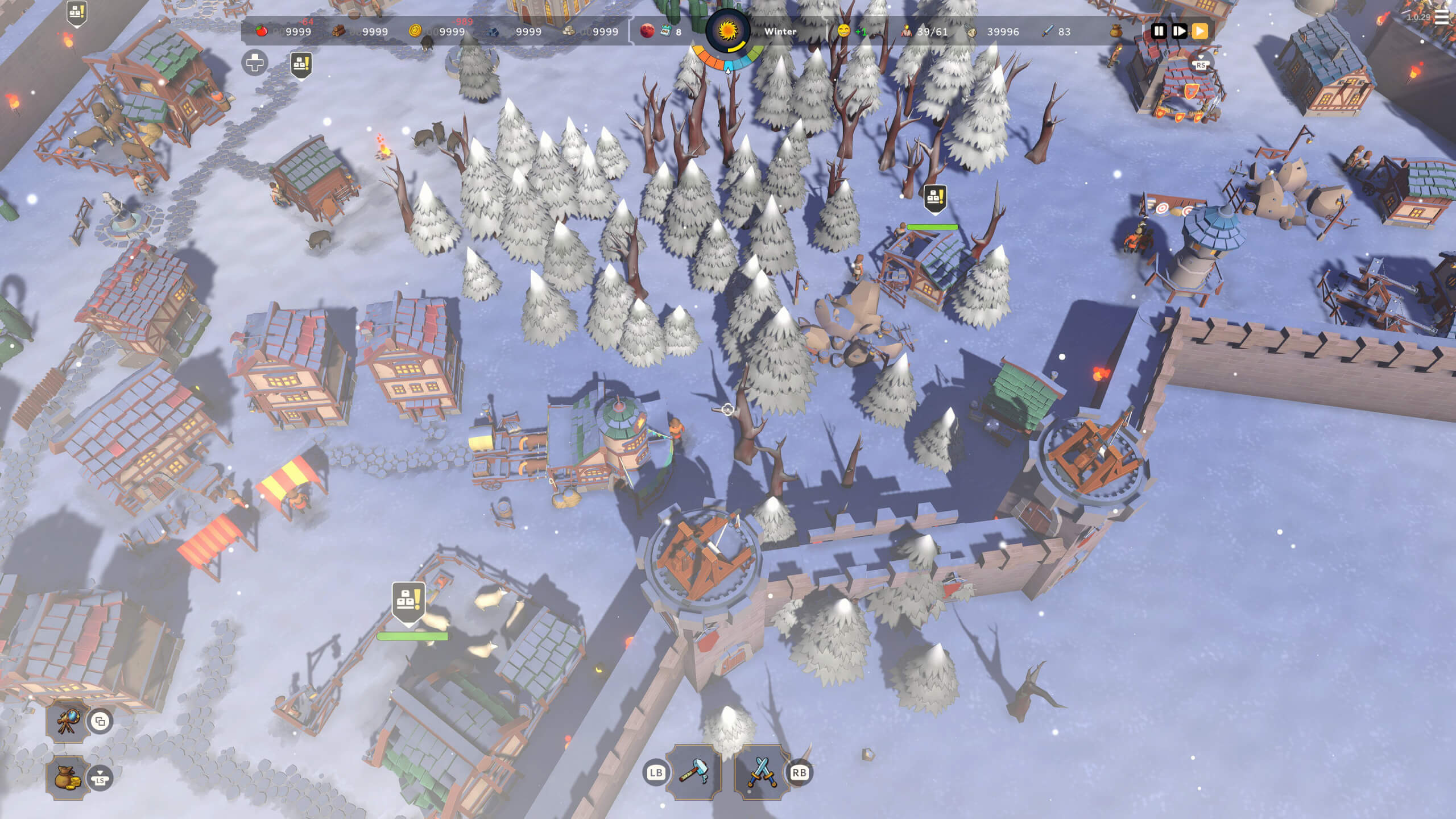
The soundtrack is pure medieval bliss: lutes, tambourines, wooden flutes, rustic, rhythmic, and varied enough to stay fresh even after hours of play. Music eases during peaceful days and tightens during sieges, perfectly matching the cycle of calm and chaos. Voice acting deserves a nod here, too. While the tutorial introduces mentors in a straightforward and instructive manner, each one has distinct tonal quirks, encouraging, urgent, or even a touch playful, that add subtle personality to the world. They don’t overshadow your experience, their presence reinforces the charm of your kingdom, guiding you while keeping the atmosphere immersive.
Together, these audio and visual layers make Becastled feel both dynamic and cosy. The world isn’t something to manage; it’s a space to enjoy, and occasionally panic in when the Moon Beasts arrive. It’s a rare blend of charm and strategy, awe-inspiring for a smaller RTS.
Longevity
Once you’ve finished the tutorials, Becastled becomes what you make of it. The lack of a campaign might turn off players looking for a narrative hook, but for experimenters, it’s a dream. Between free play, sandbox, and the map editor, you can easily lose track of time perfecting your fortress or pushing your luck against hordes. There’s always one more tile to claim, one more raid to survive before you finally call it a night.
Performance-wise, Becastled runs nicely, and controls well whether playing with a controller or keyboard and mouse. Though the occasional bug cropped up – buildings not appearing during the tutorial, which thankfully reloaded without issue – It’s nothing game-breaking, but worth noting. The balance between relaxation and tension is what keeps Becastled special. It’s never overwhelming, yet never dull. That gentle rhythm of gathering by day and defending by night scratches both the creative and strategic itch.
If you’re the kind of player who loves Age of Empires’ depth but doesn’t want to spend ten hours managing supply lines, or if you adored Kingdom Two Crowns but wished it had more depth, Becastled sits comfortably between the two.
Final Thoughts
Becastled is one of those games that reminds you why the RTS genre deserves more love. It’s approachable without being shallow, charming without being twee, and strategic without drowning you in spreadsheets. Yes, a campaign mode and a few quality-of-life tweaks would make it even stronger, but the foundations here are solid. From its delightful soundscape and inviting art style to its satisfying loop of daytime planning and nighttime panic, Becastled offers hours of fun. It’s a game that makes you smile even as your walls crumble and your villagers scream. If you’ve ever wanted a cosier take on medieval defence, Becastled is absolutely worth your time.

Disclaimer: A code was received in order to write this review.
If you enjoyed this review, why not check out my previous article for a different medieval strategy, Dicealot

YouTube | Facebook | Twitter | Instagram | Discord | Podcast
